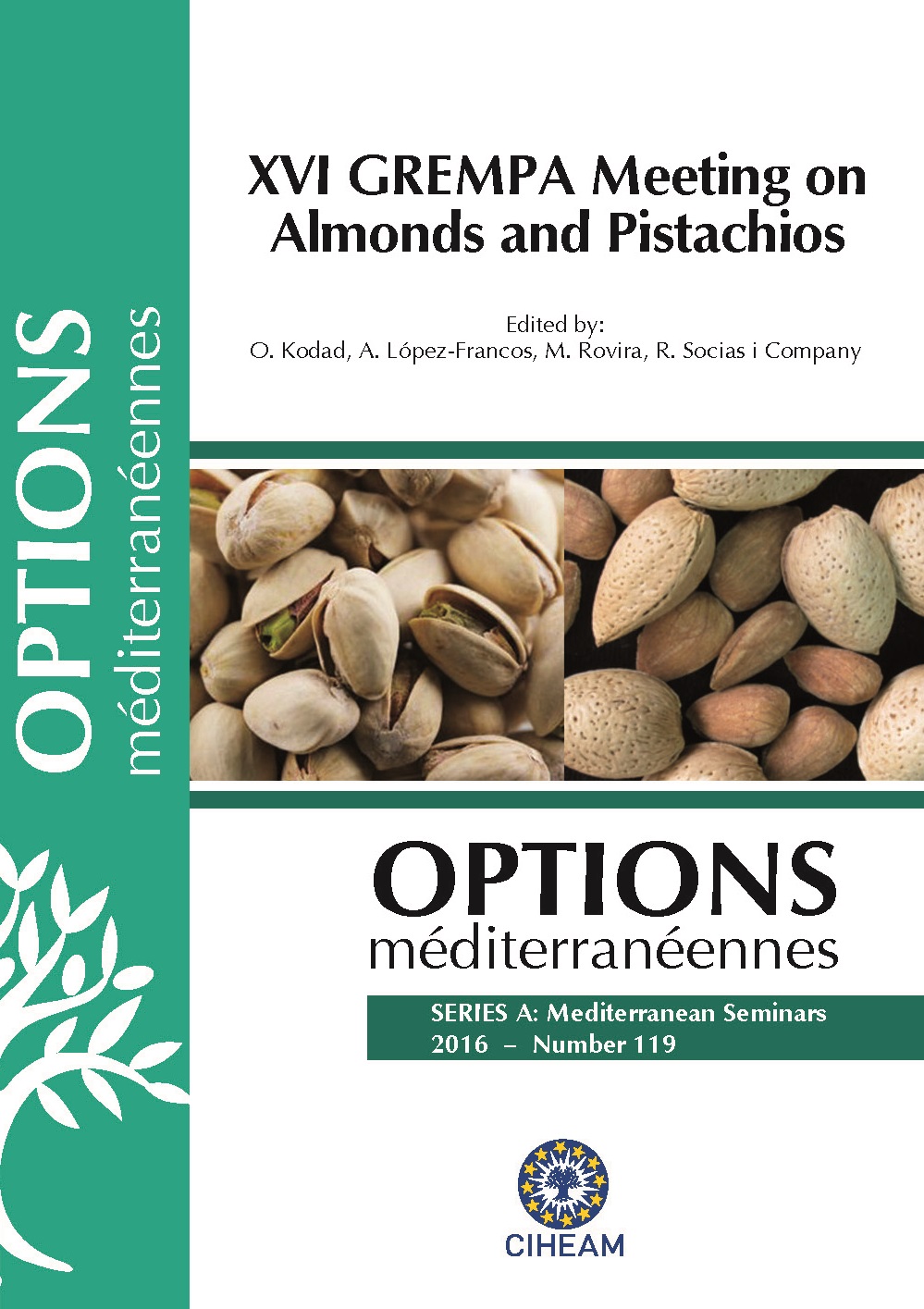| Article précédent | p. 93-97 | Article suivant |
Contribution in tracing the origin and evolutional history of almond around the Mediterranean basin
Results regarding the origin and domestication steps of almond and its dissemination around the Mediterranean basin are very controversial. The general belief is that the domestication was in the eastern side and then its dissemination to the western part was through the different trade routes. A recent study has proved using a combination of nuclear and chloroplast microsatellites a westward dispersal of almond and a long-standing presence of domesticated almond in northern Africa. In order to contribute to this discussion, new interpretation of the previous study using 10 SSRs to analyse 82 almond accessions from different origins was undertaken. The dendogram based on the similarity matrix presented four main clusters. In group A were present the majority of the local genotypes that originate from the centre and the south. Contrarily, all cultivars from the north were in group C and clustered with the European and American genotypes. In fact, the Bayesian-based analysis endorses a two divergent population structure. Accordingly, our study supports the presence of two genetically distinct groups. One located in the north and a second in the central and southern part that may be issued from mutational processes. Thus, our work supports the hypothesis of the French team regarding a native existence of almond in North Africa and a possible westward dispersal.
Les résultats relatifs à l’origine et aux différentes étapes de domestication et de dissémination de l’amandier aux alentours du bassin méditerranéen sont très controversés. Les hypothèses avancées à ce jour évoquent une domestication dans la zone Est suivie d’une dissémination au coté Ouest à travers les différentes voies de commerce terrestres et maritimes. Des études récentes ont montré par combinaison de marqueurs microsatellites nucléaires et chloroplastiques l’existence plausible d’une étape de dissémination ouest-est et d’une présence très ancienne de l’amandier dans le nord de l’Afrique. Ainsi et dans le but de contribuer à cette discussion une nouvelle interprétation des résultats relatifs à l’utilisation des dix marqueurs microsatellites utilisés pour la caractérisation moléculaire de 82 génotypes d’amandier issus de différentes origines a été entreprise. Le dendrogramme basé sur la matrice de similarité montre la présence de 4 groupes distincts. Dans le groupe A on note la présence de toutes les variétés et écotypes locaux issus du centre et du sud tunisien alors que dans le groupe C existent toutes les variétés locales du nord regroupées avec celles originaires de l’Europe et de l’Amérique. De plus, l’analyse bayésienne approuve la présence en Tunisie de deux pools génétiques d’amandier très distincts. Ainsi, ce travail soutient l’hypothèse émise par l’équipe française quand à l’ancienne existence de l’amandier en Afrique du nord ainsi que la possibilité d’une dissémination ouest-est.
- [ Afficher ]
- [ Télécharger ]
- [ Exporter la citation ]
Vous pouvez télécharger la citation au format :
- [ Imprimer ]
-
Mots-clés
DOMESTICATION, PRUNUS DULCISCiter cet article
Gouta H., Ksia E., Ben Ayed R., Gogorcena Y., Rebai A. Contribution in tracing the origin and evolutional history of almond around the Mediterranean basin. In : Kodad O. (ed.), López-Francos A. (ed.), Rovira M. (ed.), Socias i Company R. (ed.). XVI GREMPA Meeting on Almonds and Pistachios. Zaragoza : CIHEAM, 2016. p. 93-97. (Options Méditerranéennes : Série A. Séminaires Méditerranéens; n. 119). 16. Meeting of GREMPA (Groupe de Recherches Méditerranéennes pour l\'Amandier et Pistachier / Mediterranean Research Group for Almond and Pistachio), 2015/05/12-14, Meknes (Morocco) . http://om.ciheam.org/om/pdf/a119/00007371.pdf



